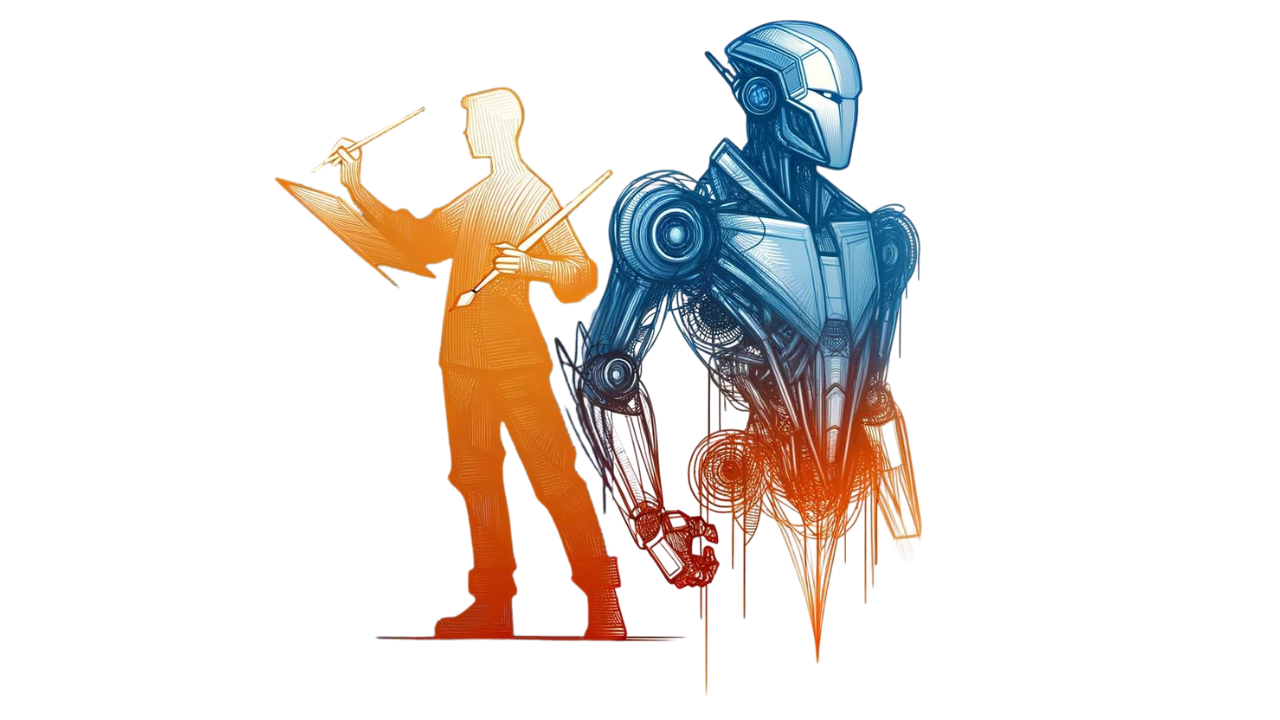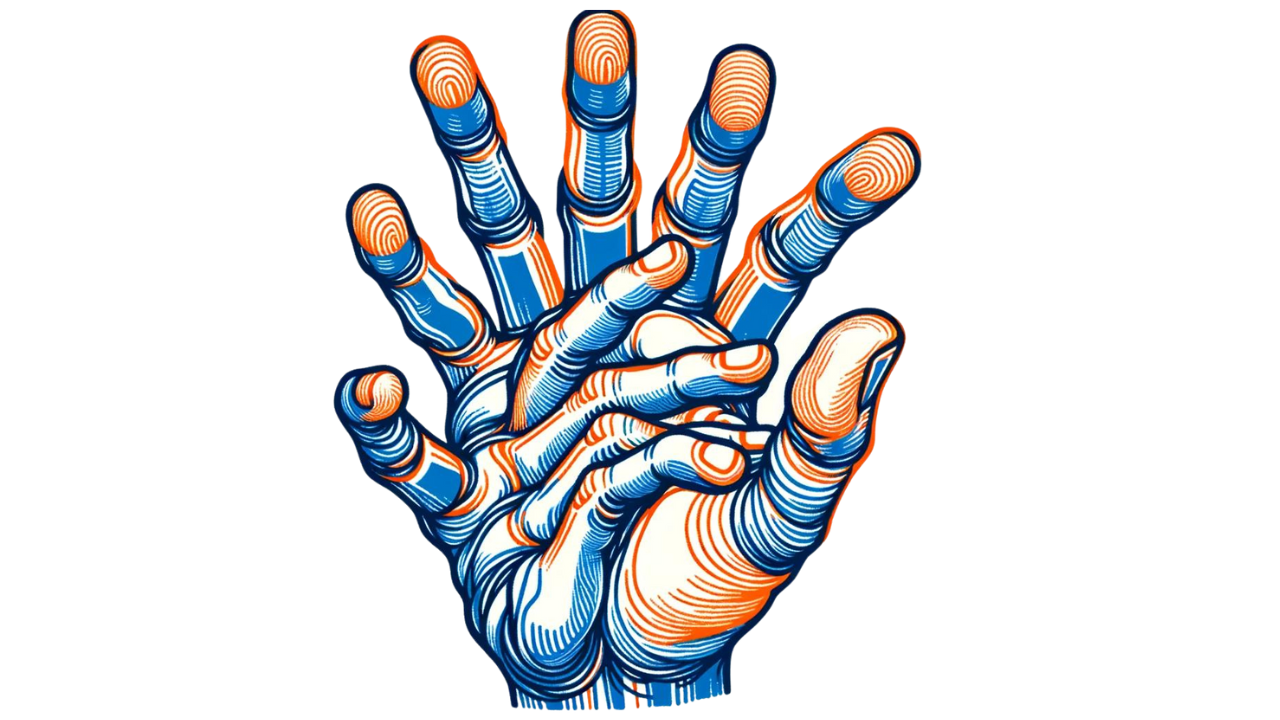Over the last couple of years we’ve encountered a massive change in the way we do things thanks (or as a consecuence) of the impact that AI tools such as Midjourney or DALL-E have had on our design process as board game designers.
Is AI bad for the boardgame insdustry?
Are game designers and professionals for or against this technology? Even something that could be perceived as small, such as SPIEL Essen using AI art on it’s app, posters and tickets during last year’s convention can be perceived as negative in an industry as preoccupied with fostering creativity and collaboration.
Some crowdfunding platforms are clapping back. BackerKit recently implemented a new policy regarding AI-generated content. This policy restricts the use of AI-generated content in projects on the platform, and also gives the choice to creators to hide their projects from machine learning, so their unique styles and works are harder to be replicated and used by others.
All this is to highlight creators and their work over only using AI and as a response to concerns about ownership of content, sourcing of data, and compensation for content creators.

What do game publishers say about AI tools for board game design
Publishers against AI
Chaosium
[show more] Some publishers such as Chaosium, the publishers of Call of Cthulhu have announced that artists working for them should avoid using AI art and have banned them in community content program products.
This decision is driven by ethical and legal reasons and concerns. They argue that the use of AI artworks could have an impact on the way that artists generate revenue and maintain control over their creations. Chaosium aims to ensure that all artwork in their products is created by human artists and does not involve works that machine learning base on someone else’s work.
Paizo
[show more] The publisher behind Pathfinder also took a stand last year against AI art, basically saying that AI-generated artwork should not be part of the creative process in their games.
In a similar way to Chaosium, they are preocupied about the ethical and legal issues surrounding AI-generated art and content in general. They state that they are a serious threat to the livelihoods of their partners, artists and writers integral to Paizo’s success.
They announced that all work submitted for their products must be created by humans. This reflects a growing concern in the board game and tabletop RPG community about the role and impact on human creators of AI tools, and the necessity of prioritizing human creativity and expertise in their products.
Publishers for AI
Other publishers however are taking the opposite stand and openly embracing the use of AI creative resources in their boardgames, such as Stronghold Games, the publisher of the popular board game Terraforming Mars.
[show more] They been at the center of some criticism due to their use of of AI-generated artwork in their game expansions.
In their latest crowdfunding campaign, they admited that AI-generated content, created using tools such as MidJourney, Fotor, and Adobe Suite products, was used in conjunction with human artists and graphic designers to generate ideas, concepts, and various design elements for the game. This includes not just the game components but also marketing materials.They emphasize that their use of AI is not intended to replicate the works of individual creators and that their projects feature a mix of human and AI-generated content.
AI tools in board game design – Yes or no?
Pros of using AI Tools in your board game design
1. It’s fast!
In game development, the ability to quickly generate and edit ideas is crucial. This speed can lead to a more polished final product, as designers have the flexibility to test and refine visual elements as they go and make it what they want to be with full control of the timing.
- AI can produce artwork quickly, helping designers move swiftly from one prototype to the next without waiting for traditional art to be made.
- They are especially useful in the early stages of game development where concepts and ideas are being rapidly tested and changed.
- AI-generated art can be changed more rapidly than traditional artwork, allowing designers to experiment with different visual styles and themes efficiently.
2. It’s more cost effective
- It’s budget friendly nature allows small scale projects to already have a professional look from the get go, which may make them more attractive to publishers or backers.
This is a very strong reason for why it may be chosen, specially by new designers or hobby game designers who may not have the funds yet to invest in artists to get involved in the project.
3. It creates good looking art
- It usually (not always, unless your characters are supposed to have 8 fingers) creates a high quality illustration or image.
- It’s an easy way to enhance the aesthetic appeal of a game prototype, and as mentioned, make it more engaging for play testers and more attractive to potential publishers or investors.
The quality of AI-generated art is continually improving, often reaching a level that can compete with human-created artwork in terms of visual appeal, although it’s not a replacement.
Cons of using AI Tools in your board game design

1. It lacks creativity
- AI art, while visually appealing, could lack the things that make traditional art unique and creative.
- Human artists bring their own style, creativity, and interpretation to their work, which is often a product of years of experience and personal growth.
One of the main concerns with AI-generated art is the potential lack of uniqueness and personal touch. They could, very fairly, be considered less original than actual man made art.
2. It lacks the human aspect
- Artists give their work a level of empathy and emotion that AI currently cannot replicate.
- The use of AI might result in board games that feel formulaic or lack the subtle nuances that elevate what makes games unique.
- AI art is not perfect and can sometimes produce images that are either not accurate or are just plain wrong, specially when using free services.
Artwork is a vital part of any board game, and artwork that feels artificial can disrupt immersion and make gameplay more impersonal. Traditional art often carries more emotion and serves to make the player feel the effort and care put into the game, and can make it memorable.
3. How ethical is it trully?
The growing use of AI art has sparked a debate about the ethical implications of using machine-learning generated content. This includes the impact on human artists, whose revenue sources could be impacted by the increasing use of AI, and are being impacted.
There’s also the issue of intellectual property and the fairness of using AI tools that may have been trained on artworks created by human artists without their consent, they are using those resources to create artwork derivated from them, sometimes extremely similar.
Let’s recap
It’s fair to say that these new changes have generated debate within the board game community. On one hand, the use of AI-generated content in commercial work is a grey area. AI tools can be integrated to aid the creative process rather than replace human creativity. However, is it fully morally or legal? What implications will it have on the long term for artists?
The response from the community has been mixed, with some expressing disappointment and concern over the increasing reliance on AI-generated art in board games. Others are more focused on the final product’s quality, regardless of whether the art was created by humans or AI.
We think that yes, you should play around with AI tools! But don’t forget the human element, board games are a collaborative endeavor in many instances, so the use of solely AI to get resources for your game can reduce the amount of people getting into the industry and means the loss of talent. However, they are still a great tool to prototype and create the base of your game to know what look you want to achieve. Here are some tools you can use to play around while designing your game.


